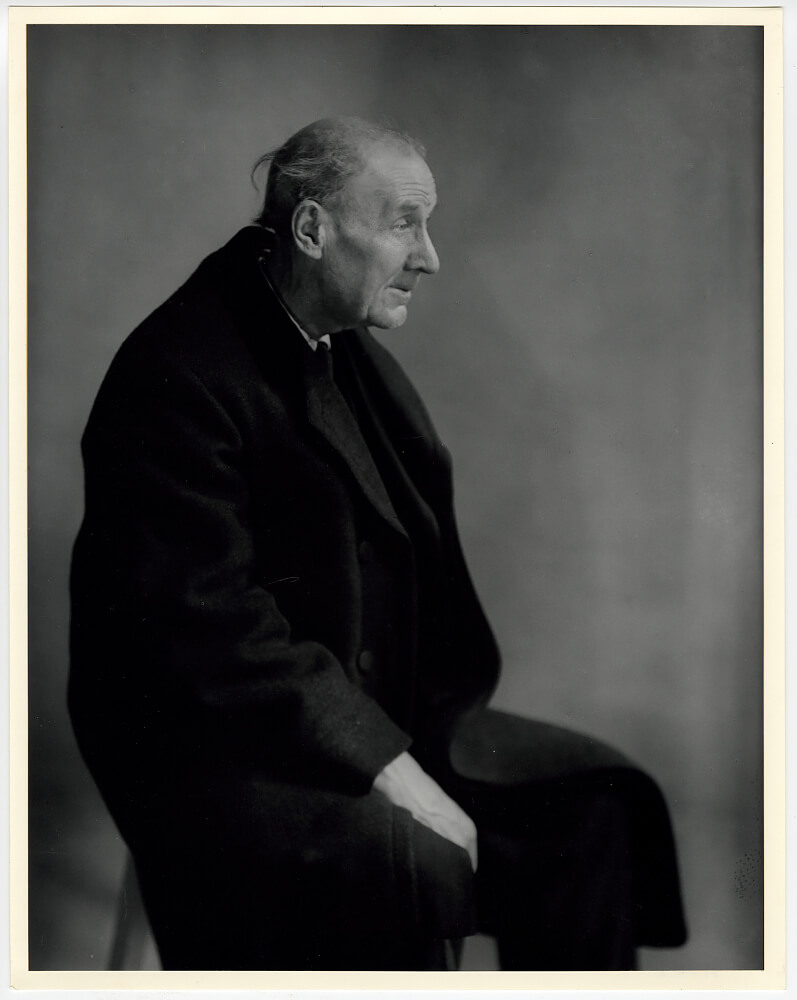Eugène Atget was a French photographer who is celebrated for his mixture of urban documentary photography and street photography which recorded the disappearing neighborhoods, street scenes and architecture of Paris. Taken during the period 1897 until his death in 1927, his images formed a huge archive of architectural ornamentation, featuring metalwork, stairways, door knockers and shop signs. Jean-Eugène-Auguste Atget was born 12 February 1857 in Libourne. His father, carriage builder Jean-Eugène Atget, died in 1862, and his mother, Clara-Adeline Atget née Hourlier died shortly after. He was brought up by his maternal grandparents in Bordeaux and after finishing secondary education joined the merchant navy.
Atget moved to Paris in 1878. He failed the entrance exam for acting class but was admitted when he had a second try. Because he was drafted for military service he could attend class only part-time, and he was expelled from drama school. Still living in Paris he became an actor, performing in the Paris suburbs and the provinces. He met actress Valentine Delafosse Compagnon, who became his companion until her death. He gave up acting because of an infection of his vocal chords in 1887, moved to the provinces and took up painting without success. His first photographs, of Amiens and Beauvais, date from 1888.
1890 Atget moved back to Paris and became a professional photographer, supplying documents for artists: studies for painters, architects and stage-designers. Starting 1898 institutions such as the
Musée Carnavalet and the
Bibliothèque historique de la ville de Paris bought his photographs. The latter commissioned him ca. 1906 to systematically photograph old buildings in Paris. 1899 he moved to Montparnasse.
While being a photographer Atget still also called himself an actor, giving lectures and readings. During World War I, Eugène Atget temporarily stored his archives in his basement for safekeeping and almost completely gave up photography. Valentine's son Léon was killed at the front.
1920-1921 he sold thousands of his negatives to institutions. Financially independent he took up photographing the parks of Versailles, Saint-Cloud and Sceaux and produced a series of photographs of prostitutes.
Berenice Abbott visited Atget in 1925, bought some of his photographs, and tried to interest other artists in his work.
1926 Valentine died and
Man Ray published several of Atget's photographs in la
Révolution surréaliste. Abbott took Atget's portrait in 1927. Eugène Atget died 4 August 1927 in Paris.
Source: Wikipedia
Eugène Atget (1857–1927) turned to photography in his late 40s, building a body of work that described the city of Paris and its environs. In its simplicity and clarity of vision, this project, resulting in over 10,000 photographs, became a modern urban portrait that has influenced many photographers since. Inspired to make a portrait of Paris at the moment when historic Paris was becoming Haussman’s modern Paris, Atget captured the changing city with eloquence and sensitivity.
Atget received little recognition before his death in 1927, but due to the posthumous efforts of photographer
Berenice Abbott, his work was preserved, promoted, and gained its rightful place in history. A significant number of his prints, including many negatives, are held by the
Museum of Modern Art, New York City, the
National Gallery of Art, Washington D.C., along with the
Bibliothèque Nationale de France.
Source: Fraenkel Gallery
Photos © Library of Congress, Prints & Photographs Division
